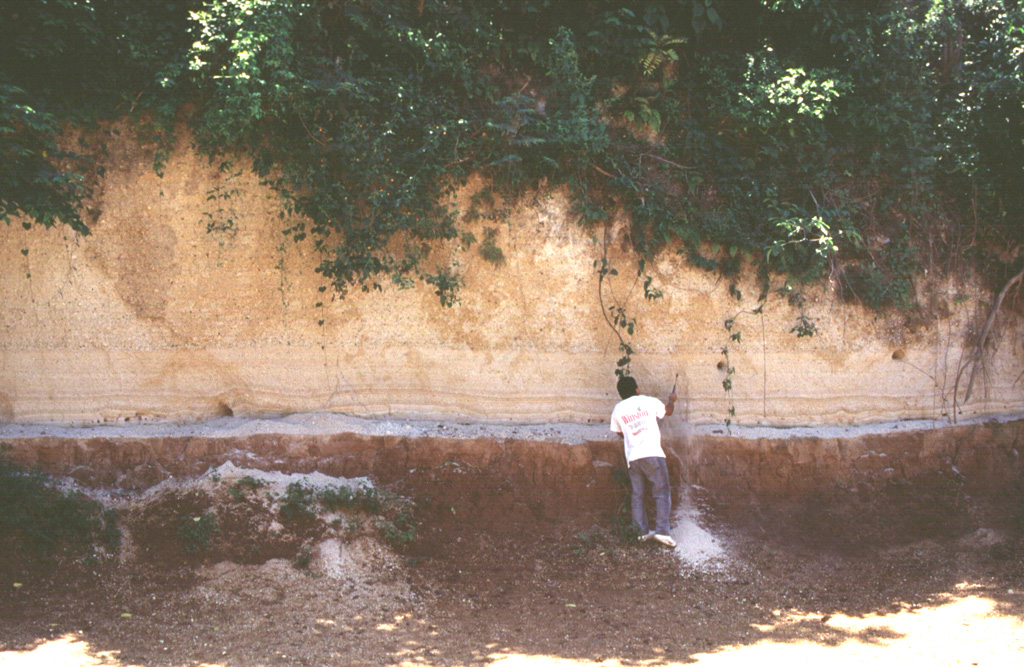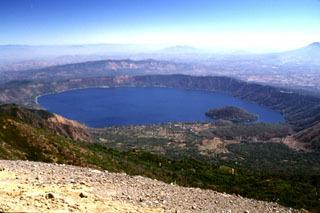Image GVP-07279

A volcanologist investigates an exposure of the Arce deposits on the eastern flank of Chilamatal caldera, about 10 km ENE of the rim of Coatepeque caldera. The Arce eruption around 72,000 years ago produced about 40 km3 of tephra and was associated with the first caldera-forming event at Coatepeque. The Arce deposits consist of two thick biotite-rich pumice fall deposits, separated by thin tephra deposits containing ash, pumice, and lithics. These ashfall deposits are distributed over much of western El Salvador.
Photo by Carlos Pullinger, 1996 (Servicio Nacional de Estudios Territoriales, El Salvador).
![]() This image is made available under the Creative Commons BY-NC 4.0 license terms.
This image is made available under the Creative Commons BY-NC 4.0 license terms.
Galleries: Fieldwork
Keywords: stratigraphy | outcrop | geology | tephra | field work | volcanologist

Coatepeque Caldera
